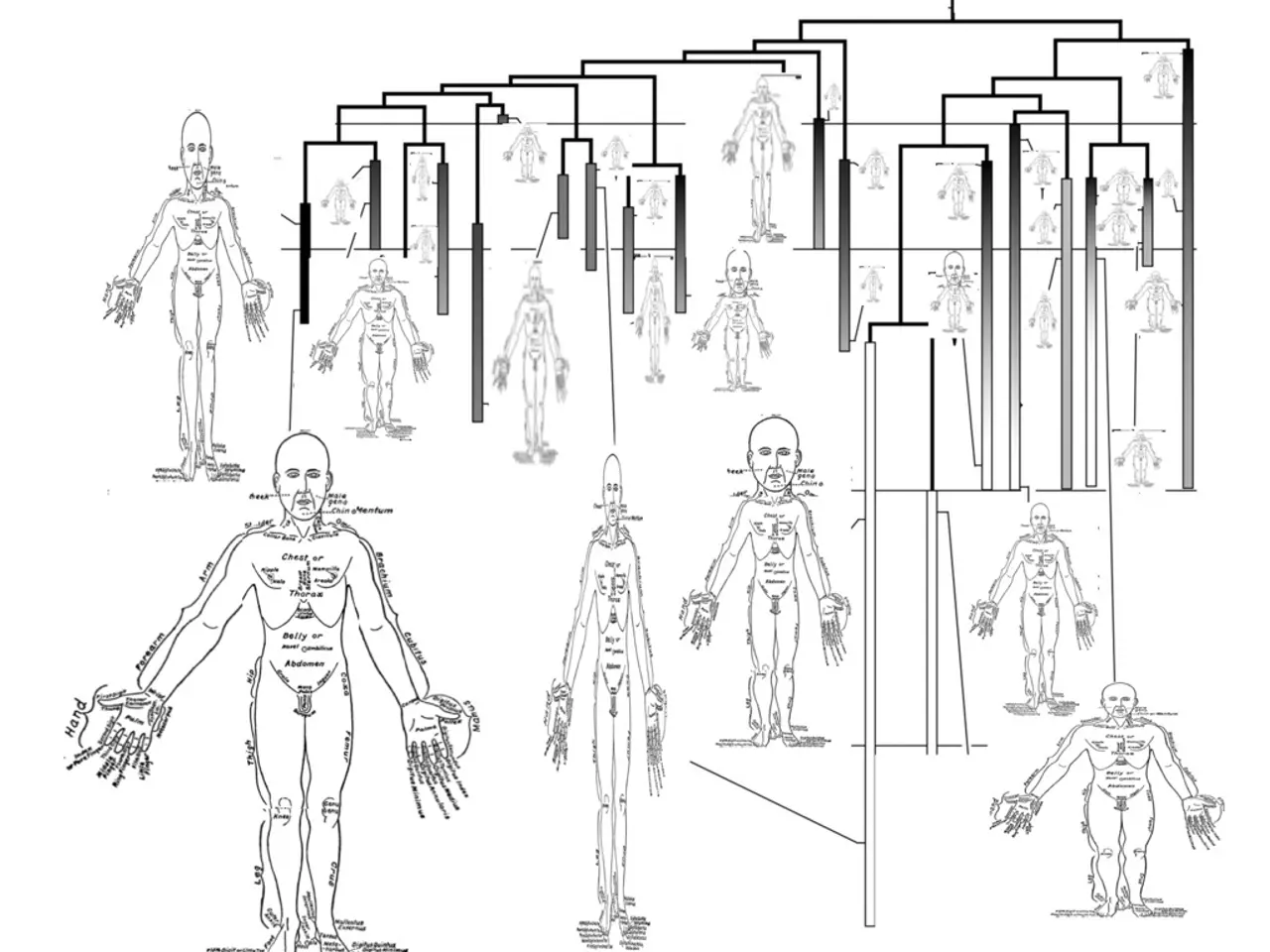Understanding the reasons why blood vessels remain intact under high pressure
In the latest issue of Nature Physics, a groundbreaking study has been shared, shedding light on the intricate workings of the human body, particularly in relation to aging and disease. The study focuses on the structural changes in cells lining blood vessels, a phenomenon attributed to nematodynamics, a concept that describes tissues oriented in a specific way.
The cells surrounding the musculature in larger blood vessels are smooth muscle cells, which play a crucial role in the relatively stable dilation (expansion) of blood vessels. These cells, it seems, are not the only players in this process. The new findings suggest that the actin layer in these cells plays a significant role in maintaining the vascular tone and preventing vessels from bursting when blood pressure suddenly rises.
The study was not conducted on vessels within an intact, human body, but rather on a miniature artificial blood vessel built in a dish. This artificial blood vessel was lined with human cells, and the inner layer, known as the endothelium, was just one cell thick. The team found that the actin completely reorients, doing a 90-degree shift from its original position when pressure is applied.
The actin in the endothelium shifts and rearranges in response to the flow of blood and the resulting pressure against the vessel walls. Without actin, the tissue becomes much softer and can't handle pressure well, suggesting that actin is crucial for making blood vessels strong.
Interestingly, cells behave differently in 3-D than in 2-D, which makes this experiment intriguing. The experiment applies real pressure to a 3-D tube, unlike most past studies that stretched cell layers in a flat, 2-D sheet. This new approach could open doors for further studies, with other scientists expressing interest in using the model to study blood vessels in places such as the kidneys or lungs.
The team's findings mirror what others have seen in real animals, such as zebrafish. The changes observed in cells lining blood vessels prevent vessels from bursting when blood pressure increases, contributing to the fluid-like expansion and dramatic reorganization of tiny thread-like proteins in these cells.
Looking forward, the team hopes to study bigger vessels that have muscle around them using their new model. The insights gained from this study could potentially lead to a better understanding of various cardiovascular diseases and the development of more effective treatments.
Read also:
- Understanding Hemorrhagic Gastroenteritis: Key Facts
- Stopping Osteoporosis Treatment: Timeline Considerations
- Tobacco industry's suggested changes on a legislative modification are disregarded by health journalists
- Expanded Community Health Involvement by CK Birla Hospitals, Jaipur, Maintained Through Consistent Outreach Programs Across Rajasthan








